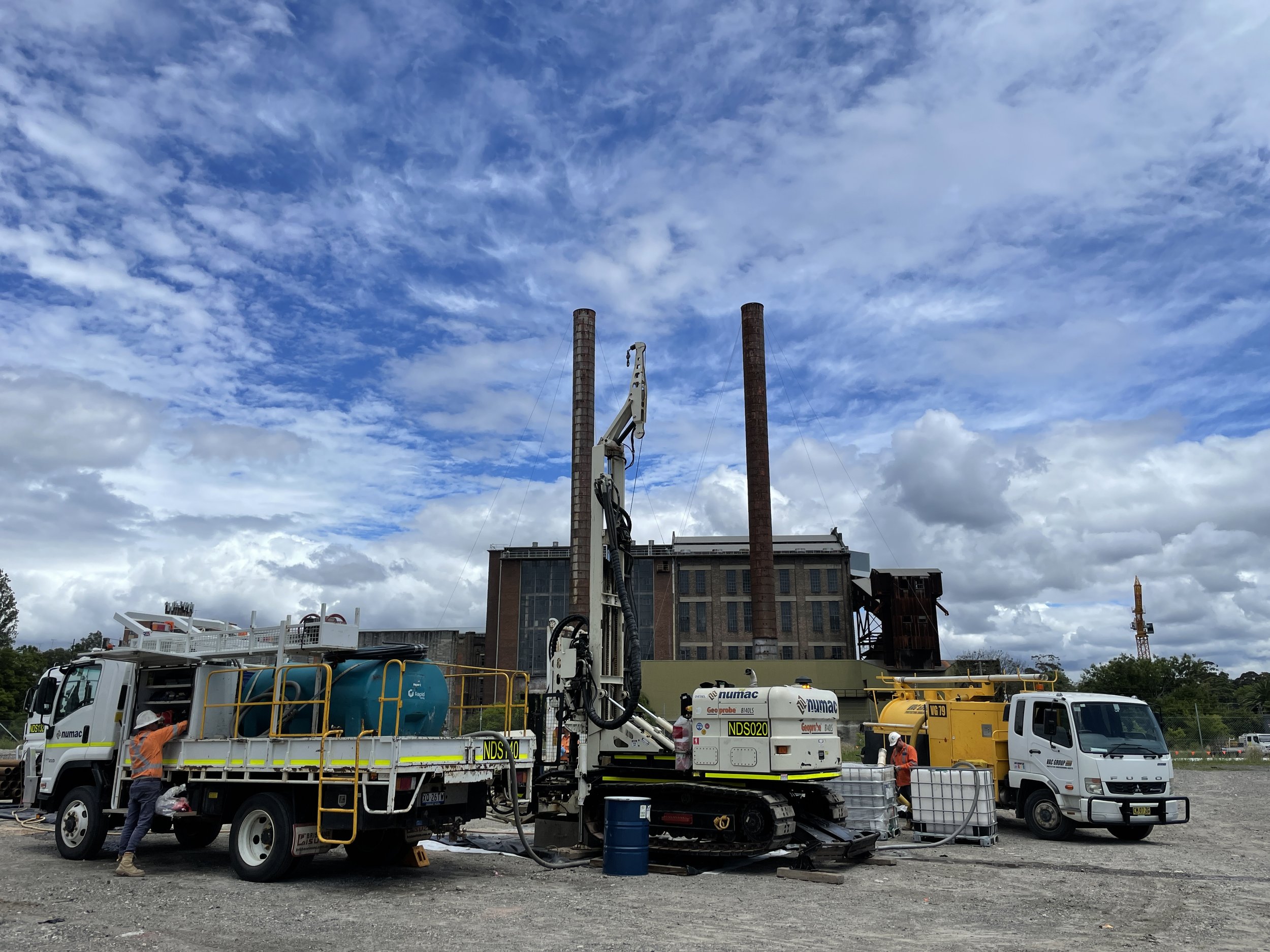Advantages of Sonic Drilling Rigs in Landfill, Tailings Storage (TSF)
Legion Drilling deploys our 8140 Sonic Drilling rig to a project in metropolitan Sydney to deal with in challenging ground conditions. In this image the rig is supported by our Vac unit for safe clearance of boreholes.
Sonic drilling rigs have emerged as innovative solutions for problems across multiple sectors of the larger drilling market, offering significant advantages for environmental, geotechnical, and mining applications. This article explores the benefits of using sonic drilling rigs, with a particular emphasis on their application in landfill, mine waste and tailings dam projects.
Legion drilling operates a fleet of 5 high capacity Sonic rigs based out of Brisbane, Townsville and Sydney servicing the whole east coast of Australia. Legions Sonic drill rigs have been set up to meet the most stringent site compliance standards including different options for hands free rod loading. Our Sonic rigs include 2 x Geoprobe 8150, 2 x Commachio MC 900 (Sonic Corp) and a Geoprobe 8140. These state-of-the-art machines enhance the efficiency of drilling in many conditions that prove difficult for conventional drilling techniques.
With over 10 years experience with Sonic drilling in Australia this is where we see the advantages for these machines.
Continuous sampling to total bore depth in all ground conditions.
Large diameter sampling, >200mm. Great for bulk sampling projects.
Single drilling string for multiple formations and conditions.
Ability to install instruments inside temporary casing (rod string).
Prevention of cross contamination using temporary casing.
Certainty of outcome when mobilising large distance with limited information on lithology.
Improved rod loading options due to single style of rod uses (Multiple diameters but no augers or rotary air required
Learning curve for operators is shorter due to consistent use of the same methodology across multiple formations.
Options for drilling over and removing/extracting existing well installations.
Sample volume to waste is greatly improved on other methodologies
Sample recovery is generally close to 100%, sample disturbance is minimal but the sonic vibration may contribute some core disturbance.
Inclusion of high speed rotary motors on the sonic machines allows for drilling of diamond core tails and conducting SPT tests as required by the scope.
Water requirements for drilling are reduced in comparison to mud rotary due to the reduced annular space in the borehole.
Sonic drilling rigs use high-frequency vibrations to advance the drill string into the subsurface. This unique method results in minimal soil disturbance, ensuring high-quality samples with minimal smearing or contamination. Environmental engineers can rely on these samples to assess soil properties and potential contaminant pathways with confidence.
We have recently begun to look at new options for running our sonic machines with both air and water with full face bits to improve production in many formations. These developments may even allow these rigs to outperform both mud rotary and air hammer some formations where production rates are the target and sampling is not required.
At this stage the biggest downside to running Sonic drilling rigs relate to the size of the rig and support vehicles and the complexity of maintaining the Sonic drill heads. To mitigate these risks Legion drilling has invested heavily in our drilling workshop team and maintenance assets to ensure that we can keep these machines running smoothly for our clientele.

